Widely Targeted Metabolomic and Transcriptomic Analyses Reveal the Regulation of Trypsin on Antioxidant Enzymes and Saturated Fatty Acids in Hylocereus undatus Fruit during Storage
PANG Xinyue, ZHANG Yinyin, LI Bairu, CAI Luning, ZHAO Shoujing, LI Xin,3,*
(1.School of Medical Technology and Engineering, Henan University of Science and Technology, Luoyang 471023, China;2.School of Food and Bioengineering, Henan University of Science and Technology, Luoyang 471023, China;3.Key Laboratory of Microbial Resources Exploitation and Utilization, Luoyang 471023, China)
Abstract: In order to gain further insights into the mechanism of action of trypsin in fruit preservation, the synergistic mechanisms of trypsin and antioxidant enzymes were evaluated in pitaya (Hylocereus undatus).Reactive oxygen species(ROS) and antioxidant enzyme-related genes were selected based on the RNA-seq data of H.undatus regulated by trypsin.The results of protein-protein interaction (PPI) networks suggested that the entire ROS network could be a true biological scale-free network.Analysis using the Molecular Complex Detection (MCODE) plugin in Cytoscape showed that most antioxidant enzymes, including superoxide dismutase (SOD), catalase (CAT), glutathione peroxidases (GPXs), were gathered in the cluster 2 of the ROS network.The differentially expressed antioxidant enzymes were further analyzed, revealing that peroxidase 5 (POD5) and CAT as the hub proteins were regulated by trypsin.In addition, all 22 saturated fatty acids identified based on targeted metabolomic data were down-regulated.Seven of the saturated lysophosphatidylethanolamine (LysoPC)and lysophosphatidylcholine (LysoPE) were the major metabolites.To sum up, trypsin can regulate the antioxidant system and inhibit the levels of saturated fatty acids to preserve pitaya.This finding may provide a new strategy for fruit preservation.
Keywords: Hylocereus undatus; protein-protein interaction; antioxidant enzyme; omics; trypsin
RNA-seq has been wildly used[1-2].In the field of plant physiology, a large number of transcriptome studies have been used to reveal the changes of expression of genes in various plants[3-4].While, transcriptome studies on the mechanism of plant preservation are still rare.Although the key genes related to betalain biosynthesis in pulp coloration have been reported inHylocereus polyrhizus[5], and the concision analysis of antioxidant system inH.undatusinduced by trypsin has also been investigated in our previous study[6].The mechanisms of improving fruit quality during storage still need more works.
The complex regulation among proteins could be deeply investigated by protein-protein interaction (PPI) networks analyses[7].Network Analyzer, Molecular Complex Detection(MCODE), CentiScaPe and cytoHubba are common plugins of Cytoscape.Network Analyzer and cytoHubba are used to score and rank the nodes.MCODE could calculate and gather the clusters in the PPI network[8].CentiScaPe computes several centralities at once and help us to identify the most significant nodes[9].
H.undatusis a species of Cactaceae[10].Because of its high economic value, it has become a widely concerned fruit of emerging economy in recent years.Pitaya fruit is easy to rot after picking, and the fresh fruit supply period is short, so it is a good research material for fruit preservation[11].
At the later stage of storage, the metabolism of reactive oxygen species (ROS) in fruit was unbalanced, and the accumulation of ROS in fruit and vegetables caused membrane lipid peroxidation, which led to the decay of fruit[12-15].It has been reported that the activities of antioxidant enzymes were induced during fruit spoilage[16-18].While, the regulatory mechanisms among 3 groups: catalase (CAT),peroxidase (POD), and superoxide dismutase (SOD) during fruits storage have not been elucidated to date.
Trypsin is a serine protease.In the presence of trypsin,the scavenging activity of flavonoids to 1,1-diphenyl-2-picrylhydrazyl (DPPH) and other free radicals was significantly affected[19].It was found in our previous study that trypsin can remove superoxide anion free radical (O2-·)with high specificity and has a good protective effect on cells[20-21].The synergistic mechanisms of trypsin with antioxidant enzymes ofH.undatusduring storage, especially the hub genes have not been figured out yet.
In this study, we investigated the regulatory mechanisms of trypsin on the fruit quality ofH.undatusby cooperating with antioxidant enzymes.The changes of expression of antioxidant enzyme related genes (AEGs) ofH.undatuspeel samples were analyzed.The PPI network of ROS related proteins and sub-network of antioxidant enzymes and the different expressed antioxidant enzyme related proteins(DEAPs) were constructed.The hub proteins of DEAPs regulated by trypsin during storage were further obtained by using the plugins of Cytoscape.As a result, the regulation of trypsin on the metabolites of saturated fatty acids were also investigated.
1 Materials and Methods
1.1 Materials and reagents
The materials of fruit and purchase information of trypsin have been shown in our previous paper[22].
1.2 Instrumental and equipment
X-Rite Color i5 colorimeter ESTONE Technology(HongKong) Co., Ltd./Great-Winner Industrial (Shanghai)Corporation Co., Ltd.; Ultra performance liquid chromatography (UPLC) Shimadzu (Shanghai) Global Laboratory Consumables Co., Ltd.; 4500 QTRAP tandem mass spectrometry (MS/MS) Applied Biosystems USA.
1.3 Methods
1.3.1 Sample preparation
Thirty fruits (about 15 cm in diameter) ofH.undatuswere divided into 2 groups, including trypsin and control group.Trypsin (2.41 × 10-6mol/L) or phosphate buffered saline were brushed evenly for 80 s onto the peels.The storage conditions of incubator were 25 ℃, 85% relative humidity.After storage for one week, eachH.undatuswasrandomly selected from six areas (1 cm × 1 cm), cut off theH.undatuspeel, put the label into liquid nitrogen for 3-5 minutes, remove it and put it in -80 ℃ refrigerator for subsequent use.
1.3.2 Measurement of weight loss rate and ΔE
The weight of fruits before and after storage was measured by weighing method, and the weight loss rate of samples stored at 25 ℃ for 14 days was measured and recorded.The color ofH.undatuspeels was determined at room temperature.The value of ΔEwas calculated as following formula[23].

1.3.3 Transcriptomic analyses
All of the technological processes, including RNA extraction, transcriptomic libraries construction, analyses on the differential expression of genes, and further gene ontology(GO) and Kyoto encyclopedia of genes and genomes (KEGG)enrichment analyses were performed as reported by our previous study[18].
1.3.4 PPI analyses
Proteins encoded by target genes were exported from the cloud platform of I-Sanger.The software Cytoscape was used to construct the networks[24].The interactions between our target genes regulated by trypsin were shown.Network Analyzer was firstly used to calculate the primary network parameters.The curves of power law were formed asy=βxα[25].The plugin MCODE was used to identify the clusters of networks studied in the current work[26].Cytoscape plugin CentiScaPe also were applied to analyze centrality statistics characteristics of the nodes of DEAPs[27].High degree nodes of DEAPs were obtained by 12 topological analysis methods in plugin CytoHubba[28-29].
1.3.5 Widely targeted metabolomics analyses
Freeze-dried samples were prepared and extracted metabolites as described by Wang Ying et al[30].The extracts were absorbed by CNWBOND Carbon-GCB SPE Cartridge(250 mg, 3 mL) and filtrated using SCAA-104 filter (0.22 μm pore size) before ultra-performance liquid chromatographytandem mass spectrometry (UPLC-MS/MS) analysis[30].Next, the samples were analyzed by using an UPLC-MS/MS interfaced with electro-spray ionization (UPLC-ESIMS/MS) system operating in positive and negative ion mode and controlled by Analyst 1.6.3 software.The conditions of ESI-Q TRAP-MS/MS were described as Chen Wei et al[31].
1.4 Statistical analyses
To visualize discrimination among groups, the unit variance-scaled spectral data was analyzed by orthogonal partial least-squares discriminant analysis (OPLS-DA).The OPLS-DA model quality was represented by parametersR2X,R2YandQ2Y[32].
Metabolites were screened based on the combination ofp(corr) and variable importance in the projection (VIP)values from the OPLS-DA.The statistical analyses were performed by SPSS statistical software package (11.0.1).Nonparametric Test (Wilcoxon Test) was used to analyze the differences between the entire groups of samples.The significance of differences between samples at one time point was determined using paired-sampleTtest.Significant or highly significant difference was evaluated byP< 0.05 orP< 0.01, respectively.
The NCBI BioProject accession number is PRJNA509494.The link of the data is https://trace.ncbi.nlm.nih.gov/Traces/sra_sub/sub.cgi?acc=SRP173572.
2 Results and Analysis
2.1 Storage quality of H.undatus
As shown in Fig.1A, the fruit of two groups ofH.undatuswere fresh at 0 d.By the end of storage for 7 d,the quality of control group was sharply decreased.The appearance of trypsin group was kept well.
As shown in Fig.1B, the weight loss rate of each group significantly increased with time.The average daily weight loss rates were 1.16% and 0.60% in control and trypsin group, respectively.The difference between trypsin and control group was highly significant (P< 0.01).
From day 4, ΔEvalue dropped in all groups.Colorimetry analysis found that the fruits in trypsin group showed much lower changes than that in control group, especially in the first 7 d of storage (P< 0.01) (Fig.1C).Under storage,trypsin exhibited greater influence on color stability ofH.undatuscompared with the control group (Fig.1C).


Fig.1 Effect of trypsin treatment on the storage quality of H.undatus
2.2 Transcriptomic analyses
Trypsin can effectively improve the quality of fruit[18].To explore how trypsin perform the regulation on ROS and whether trypsin affects endogenous antioxidant enzymes ofH.undatus.The expression of antioxidant genes inH.undatusregulated by trypsin were investigated in the current study.
2.2.1 GO enrichment analyses
The biological functions regulated by trypsin were studied with GO-based enrichment analysis.When the result was shown in bar graph, the “extracellular region”was the only one term of “Cell Component” (CC) enriched in GO analysis.As shown in Table 1, the top 13 significant GO terms were enriched in two expression patterns (false discovery rate (FDR) < 1 × 10-7).Terms “heme binding(GO: 0020037)”, “tetrapyrrole binding (GO: 0046906)”, and“oxidoreductase activity (GO: 0016491)” was an up-regulated“molecular function” (MF) of GO process.Furthermore,“response to stimulus (GO: 0050896)”, “response to stress(GO: 0006950)”, “reactive oxygen species metabolic process(GO: 0072593)”, and “peroxidase activity (GO: 0004601)”was an up-regulated “biological process” (BP) of GO process.
On the other hand, the top GO terms “antioxidant activity (GO: 0016209)”, “tetrapyrrole binding (GO: 0046906)”,“response to stress (GO: 0006950)”, “reactive oxygen species metabolic process (GO: 0072593)”, “oxidoreductase activity(GO: 0016491)”, and “single-organism cellular process (GO:0044763)” were enriched in the down-regulated pattern (Table 1).
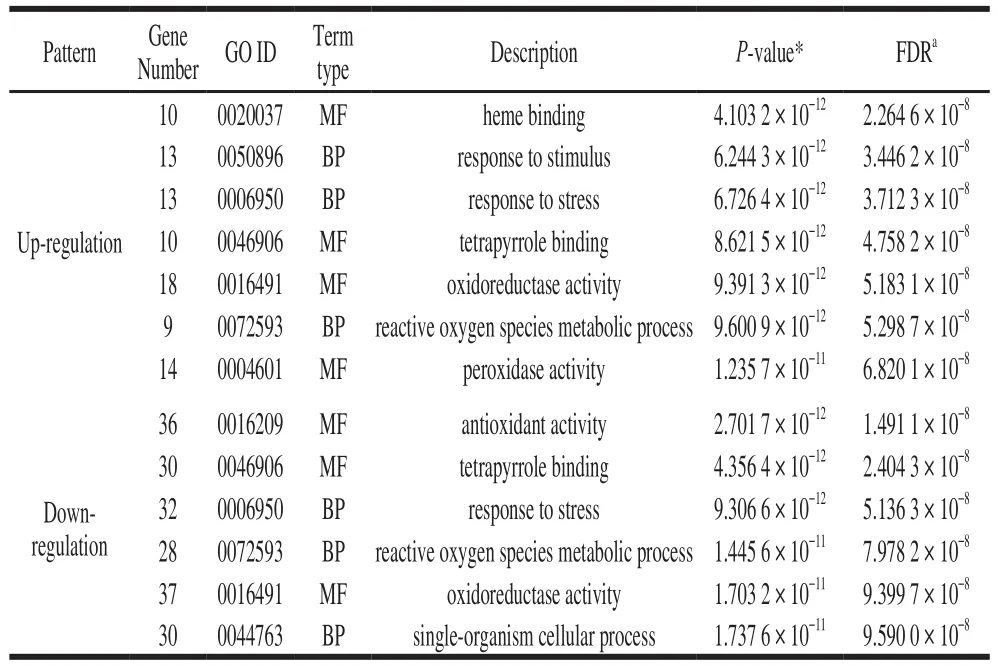
Table 1 Top 13 GO enrichment terms related to AEGs(FDR < 1 × 10-7) upon trypsin treatment
The GO terms of AEGs involved in trypsin regulation can be summarized into a directed acyclic graph (DAG)(Fig.2).The relation between terms are described as “is_a”, and “part_of”.For example, the GO biological process“superoxide dismutase activity (whose unique identifier within GO is GO: 0004784)” is a child of “oxidoreductase activity, acting on superoxide radicals as acceptor (GO:0016721)” and “antioxidant activity (GO: 0016209)”.In addition, GO: 0004784 is also a part of “removal of superoxide radicals (GO: 0019430)”.Their parent terms trace back to the ultimate ancestor, GO: 0008150, which is the root of the biological process ontology.
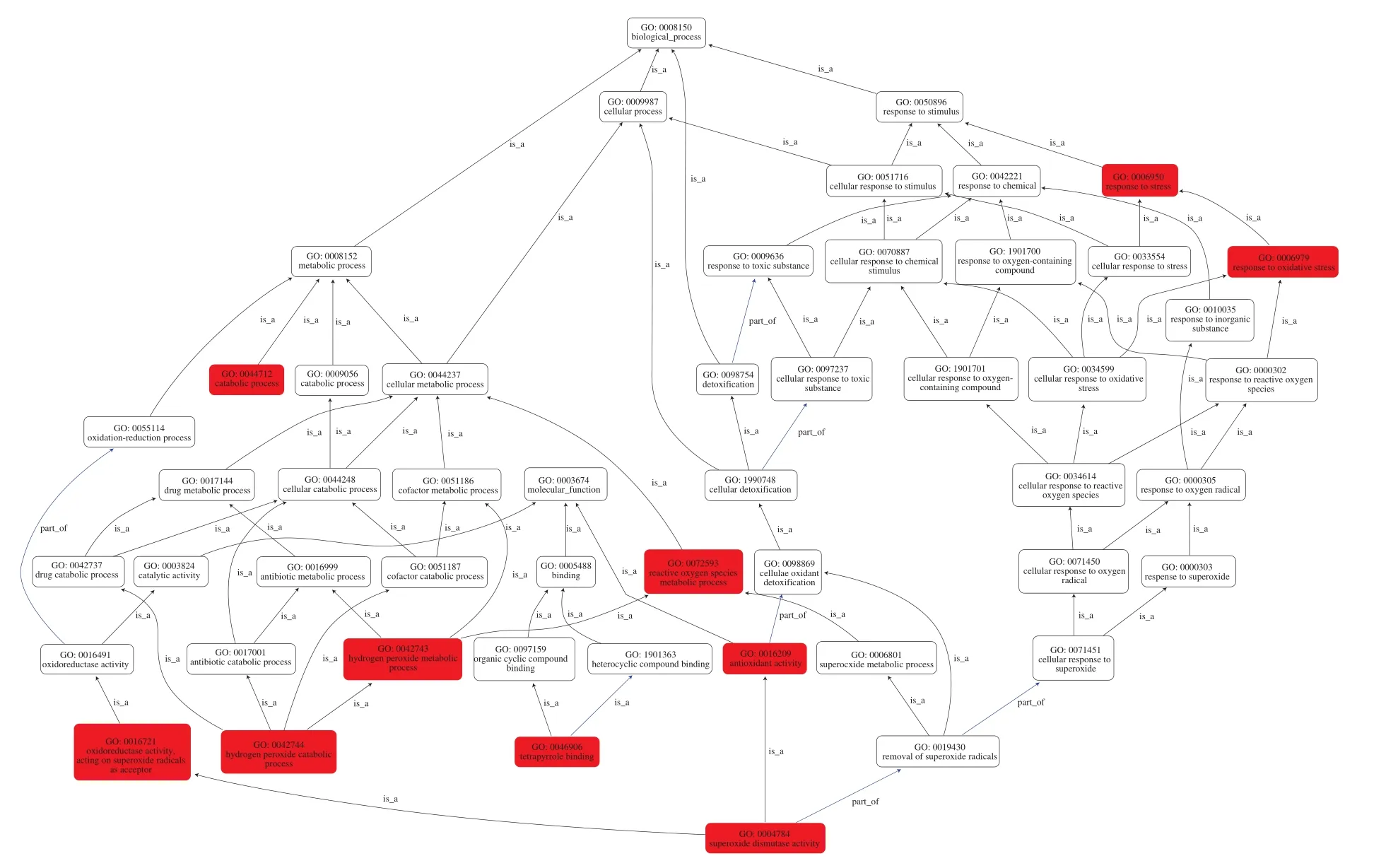
Fig.2 Relationships between GO terms in a directed acyclic graph (DAG)
2.2.2 KEGG Pathway enrichment analyses
Table 2 showed the top 8 enriched AEGs KEGG pathways (FDR < 0.01).With trypsin, the most enriched pathway was “Phenylpropanoid biosynthesis (map00940)(60 genes enriched)”.The expression changes of genes were exhibited in the chorda graph (Fig.3).Either up or downregulated genes were enriched in the “Phenylpropanoid biosynthesis (map00940)” and “Glutathione metabolism(map00480)” (Table 2).In addition, up-regulated genes were also enriched in “Arachidonic acid metabolism (map00590)”and “Peroxisome (map04146)”.Down-regulated genes were also enriched in “Ascorbate and aldarate metabolism(map00053)” (Table 2).
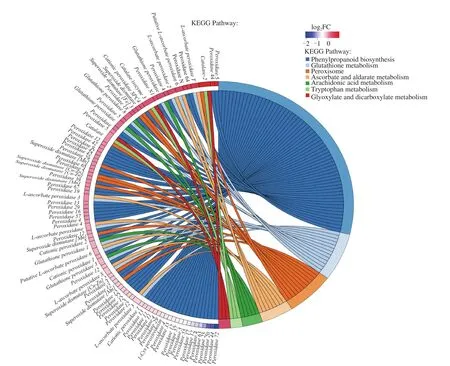
Fig.3 Chordal graph of KEGG enrichment of AEGs
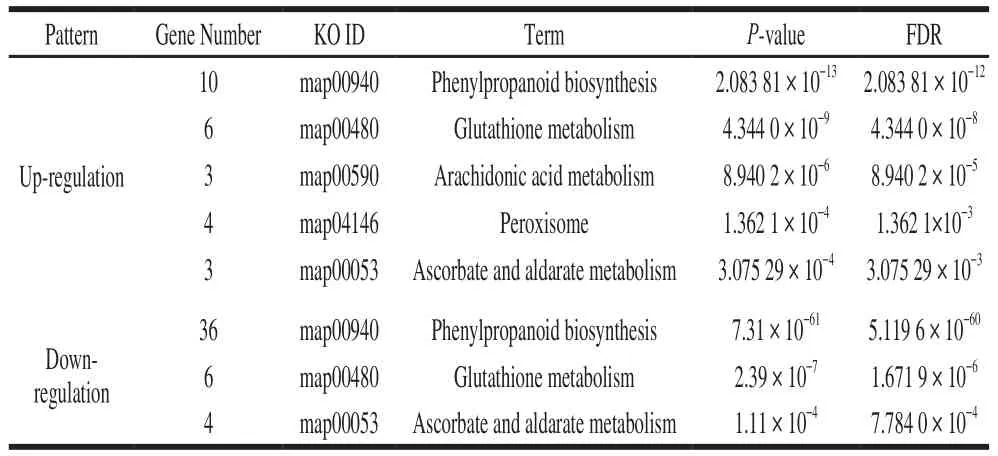
Table 2 8 pathways related to AEGs (FDR < 0.01) enriched by trypsin
2.3 PPI networks analyses
2.3.1 PPI networks of ROSs
PPI network analysis was used to investigate the interaction mechanism of antioxidant enzymes and identify the key proteins involved in ROS metabolism regulated by trypsin.
Totally, 1 117 ROS related proteins were obtained(434 up- and 465 down-regulated) (Fig.4).The PPI subnetwork of total ROS related proteins was constructed by Cytoscape.It was composed of 465 nodes and the first 3 000 edges, containing 45 different expressed proteins(DEPs) highlighted by blue color (Fig.4).These networks indicated that trypsin deeply impacted on the PPI network inH.undatusas DEPs interacted with amount of proteins to enlarge the biological effects.
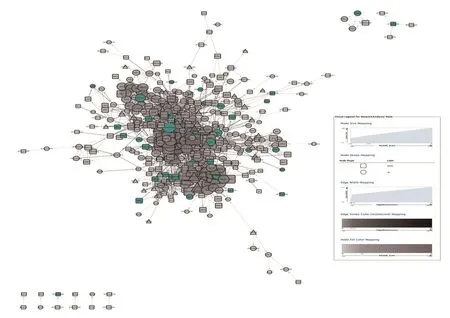
Fig.4 PPI networks of trypsin-induced ROSs constructed by Cytoscape software
The Cytoscape plugin “MCODE” was layered on and 18 clusters were obtained.Nodes belongs to the top 13 clusters were highlighted by different border colors in the PPI network (Fig.5).Among these, 9 of the DEPs were highlighted in cluster 1, 2, 3, and 5 (Fig.6).Furthermore, 28 antioxidant enzyme related protein (AEPs) were screened and highlighted by filled with blue color in ROS network(Fig.5).Results showed that most of these AEPs, including SODs, CAT and GPXs, were gathered in the cluster 2 (Fig.5 and Fig.6B).
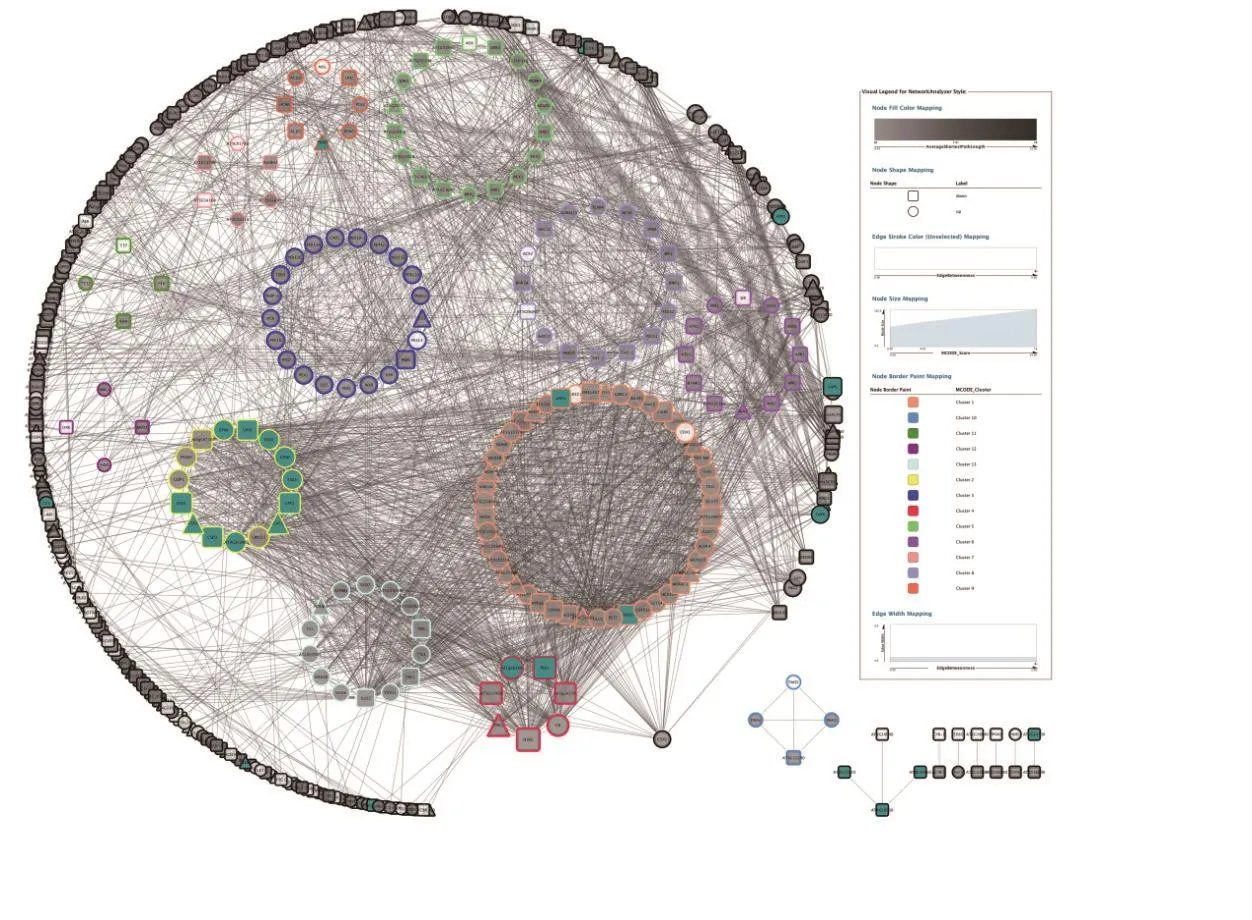
Fig.5 PPI networks of trypsin-induced ROSs constructed by Cytoscape
Considering that trypsin is a superoxide scavenger, it is important to reveal the status of AEPs in the entire ROS network.Among the obtained eighteen clusters by MCODE,most of the AEPs located in the cluster 2 (Fig.6B).
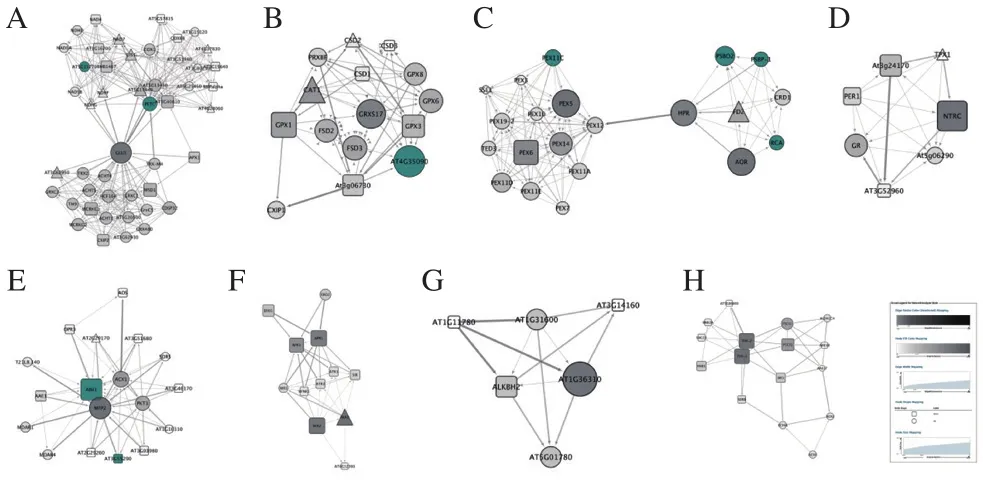
Fig.6 Top 8 clusters of ROSs related PPI network calculated by MCODE
2.3.2 PPI networks of AEPs
Totally, 111 AEPs (33 up- and 49 down-regulated) were screened from entire 1 117 unigenes.The PPI sub-network of the 111 AEPs composed of 49 nodes and 368 edges,containing 9 DEPs (nodes filled by blue color) (Fig.7).
When the nodes were layout by MCODE node status based on group attributes, fifteen nodes were classified into group 1 which was constructed by PODs.And 20 nodes were classified into group 2, most of which was composed of SODs and CATs.The node “APX6” acted as a single one linked 2 groups and the other nodes (Fig.7).
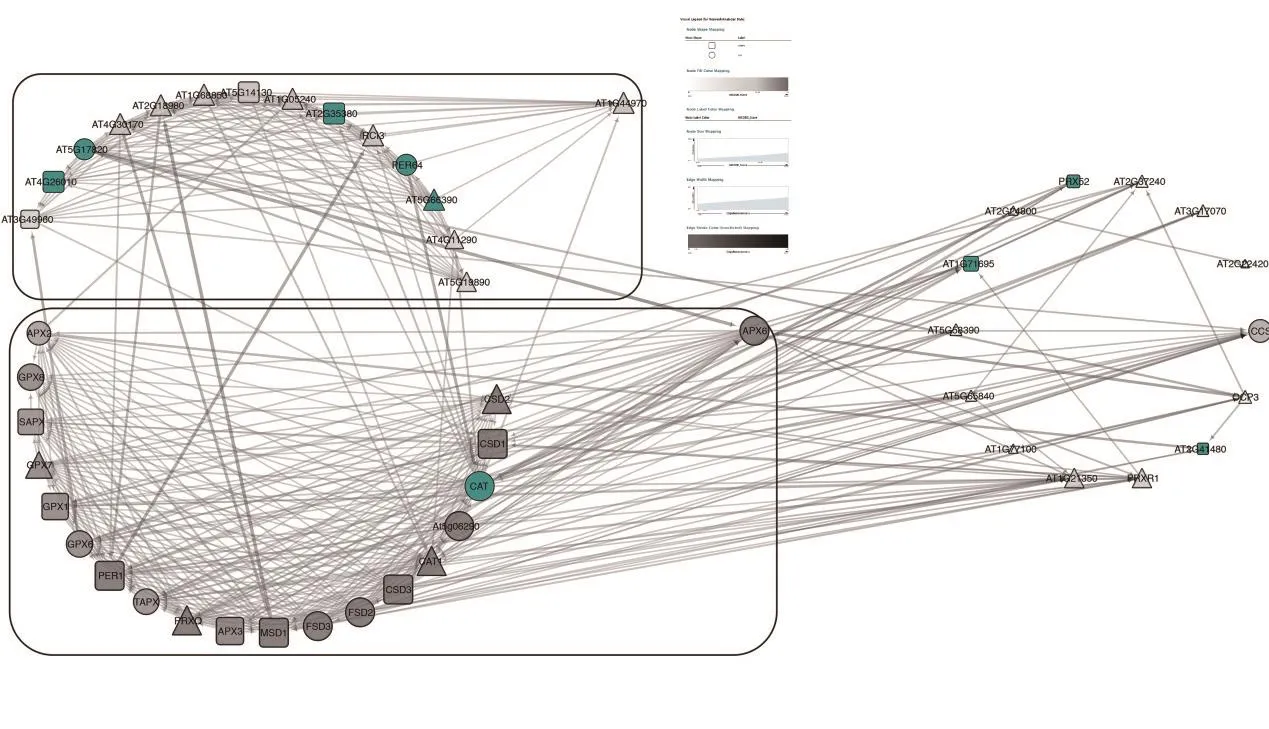
Fig.7 PPI networks of trypsin-induced AEPs constructed by Cytoscape
2.3.3 PPI networks of DEAPs
Furthermore, sub-network of DEAPs was constructed(Fig.8).HuCAT and 2 PODs (HuPOD5 and HuPOD57)were up-regulated, while 5 of 7 PODs were down-regulated.Based on 12 ranked methods including Maximal Clique Centrality (MCC), Density of Maximum Neighborhood Component (DMNC), Maximum Neighborhood Component(MNC), Degree, EPC, BottleNeck, EcCentricity, Closeness,Radiality, Betweenness, Stress, and Clustering Coefficient in cytoHubba, 8 DEAPs were ranked.Results showed that 8 DEAPs were ranked into 3 classes by most of these methods.HuPOD5 and HuPOD20 (Normalized stores were approximate to 10) were classified to the first class.HuCAT,HuPOD57, HuPOD44 and HuPOD72were classified to the second class (Normalized stores were approximate to 8).HuPODP7 and HuPOD12 was classified to the last one(Normalized stores were approximate to 3).Synthesizes the 12 ranked methods, the DAP of 8 DEAPs was shown as the result calculated by closeness.
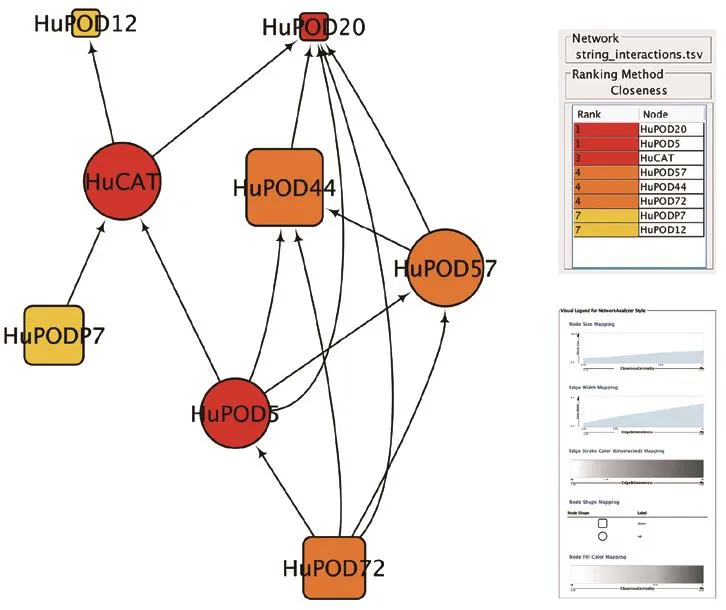
Fig.8 Sub-network of DEAPs
Considering the inconsistent results of 12 ranking methods of cytoHubba, another plugin CentiScaPe was also used to further identify the hubs in PPI networks.CentiScaPe is an effective tool that illustrates topological parameters of each nodes[27].Analyzed by the plugin CentiScaPe, the protein HuCAT and HuPOD5 showed high centralities values for most of the computed centralities suggesting their central role in the network structure and function (Fig.9).Overall results indicated that HuPOD5 and HuCAT acted as hub proteins regulated by trypsin.
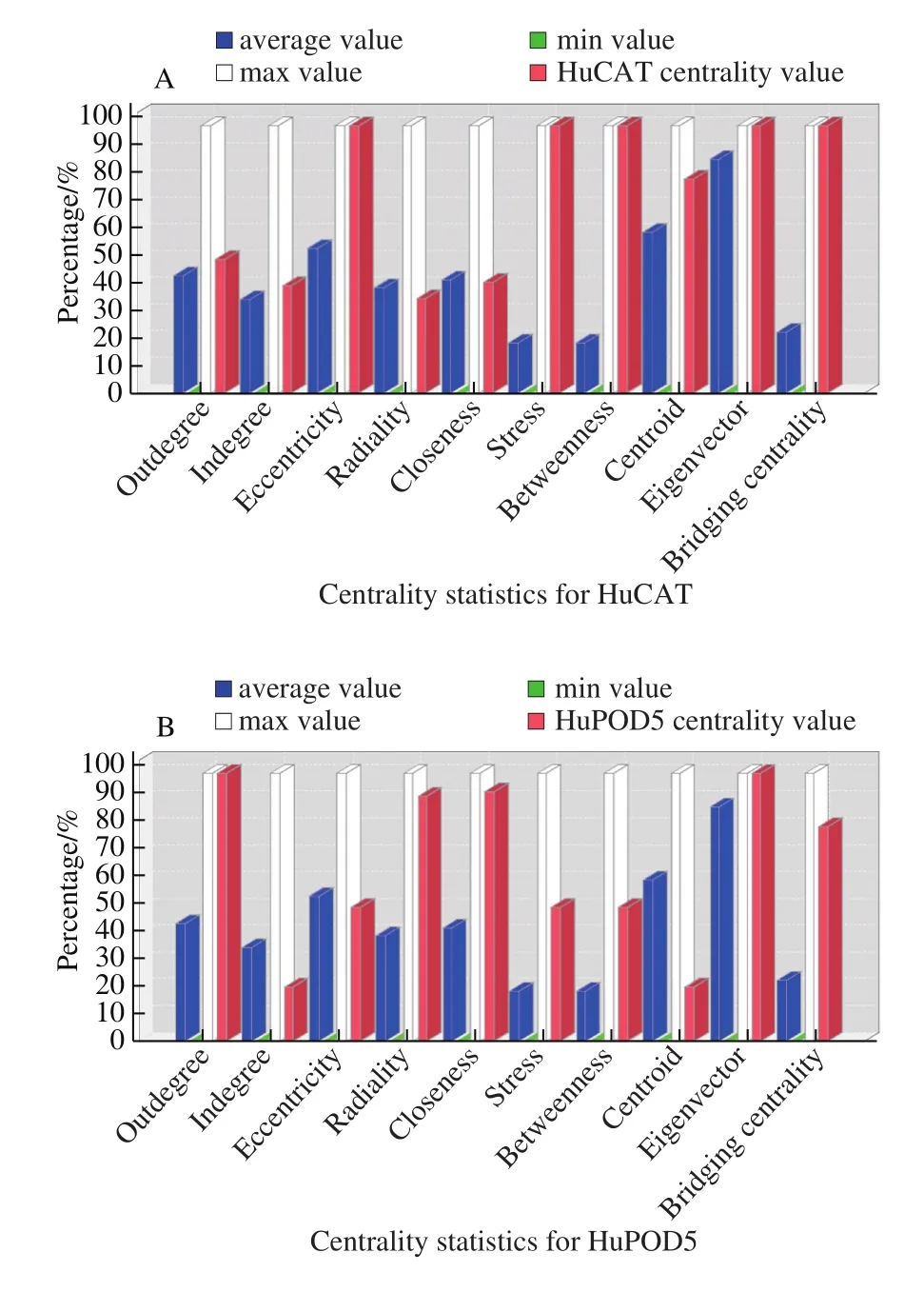

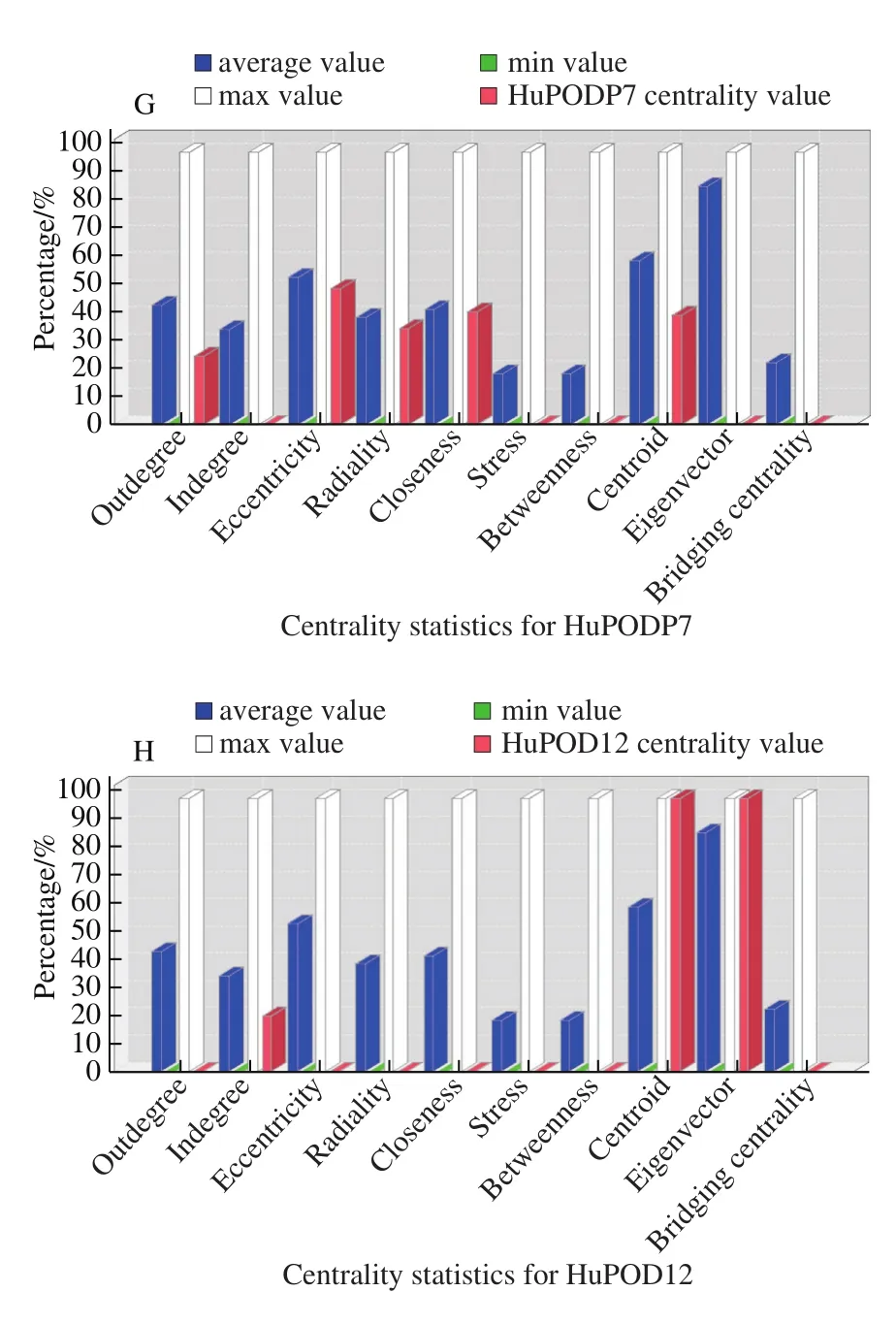
Fig.9 Network analysis of DEAPs by CentiScaPe
Overall, trypsin in combination with SODs induced higher CATactivity, cooperated byPODs(Fig.4, 5, 6, and 8).The facts that all of the DEAPs were HuCAT and HuPODs,were strongly consisted with those in our previous reports where it was identified that superoxide anion was scavenged and H2O2were produced by trypsin[20].
2.3.4 Topological properties of networks
The node degree distributions of the total ROS related proteins network followed power law fit distributions (R2=0.844) (Fig.10A and Table 3).The topological parameters of the subnetwork were shown in Table 3.
The correlation of the AEPs sub-network was decreased to 0.283 (R2= 0.061) with the sharply decreasing of nodes(Fig.10B and Table 3).Parameters of either clustering coefficient or network centralization (0.721 and 0.369,respectively) were much higher than that of total ROS network (0.385 and 0.210, respectively).Since the 8 DEAPs constructed a tiny sub-network, the parameters of network such as correlation or Network density were not credible(Fig.10C and Table 3).
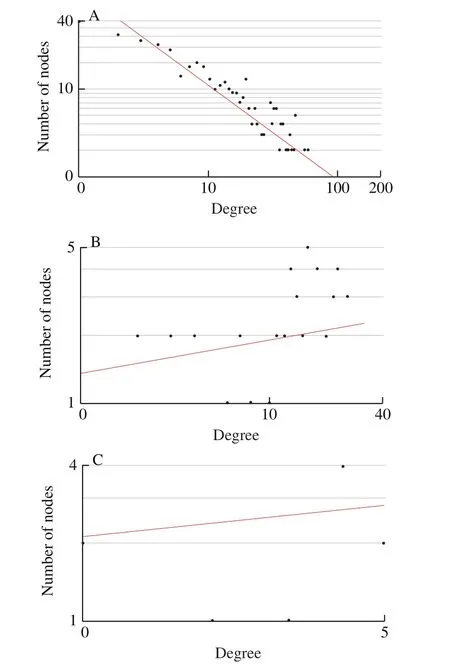
Fig.10 Scatter charts showing power law distribution of node degree

Table 3 Topological parameters of total ROS related protein, AEP and DEAP PPI networks of H.undatus treated with trypsin
It is generally acknowledged that the scale-free network could be judged according to the node degree distribution of a PPI network.This make it distinguished from random network[24,33].The node degree distributions of the total ROS related proteins network followed power law fit distributions.This indicated that the ROS PPI network is a true complex biological scalefree network.These results also showed that a few protein nodes act as hubs interacting with amounts of other proteins.
All of the above results indicated that HuPOD5 and HuCAT were hubs regulated by trypsin.In addition, it was suggested that the biological networks are not always scalefree networks.
2.4 Metabolomic analyses
A total of 453 compounds were identified.Among these metabolites, 120 compounds were annotated in human metabolome database (HMDB) (Fig.11A), including 30 organic acids and derivatives (25.00%), 21 organoheterocyclic compounds (17.50%), and 19 lipids and lipid-like molecules(15.83%).Totally, 70 lipids were identified, including 22 saturated and 48 unsaturated fatty acids.As shown in the heatmap, all of the 22 saturated fatty acids, including saturated LysoPCs/PEs, myristic acid, hexadecanoic acid and so on,were down-regulated by trypsin (Fig.11B).In addition, 7 metabolites were identified based on the VIP > 1 in the OPLSDA model (Fig.11C).All of these 7 metabolites (e.g., LysoPC 12:0, LysoPC 15:0, and LysoPE 18:0) were differential expressed metabolites (DEMs) (P< 0.05).


Fig.11 Metabonomic analyses of metabolites regulated by trypsin
3 Conclusions
Transcriptomic analyses identified 1 117 ROS related genes regulated by trypsin that were involved inH.undatusquality improvement during storage.Results revealed that 465 nodes were gathered in the PPI subnetwork of total ROS related proteins, containing 45 DEPs.Results of MCODE of Cytoscape, showed that most of these AEPs, including SODs, CAT and GPXs, were gathered in the cluster 2.As for the AEPs, 111 PPI sub-network of AEPs composed of 49 nodes and 368 edges.Based on further analysis on DEAPs,HuPOD5 and HuCAT acted as hub proteins regulated by trypsin.Widely targeted metabolomic analyses revealed that all of the 22 saturated fatty acids were down-regulated by trypsin.Results also indicated that the ROS PPI network is a true cellular complex biological scale-free network.As a new bio-preservative, trypsin regulates antioxidant metabolism to perform the quality control of fruit storage.

